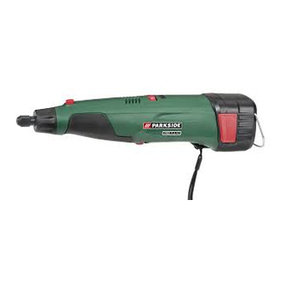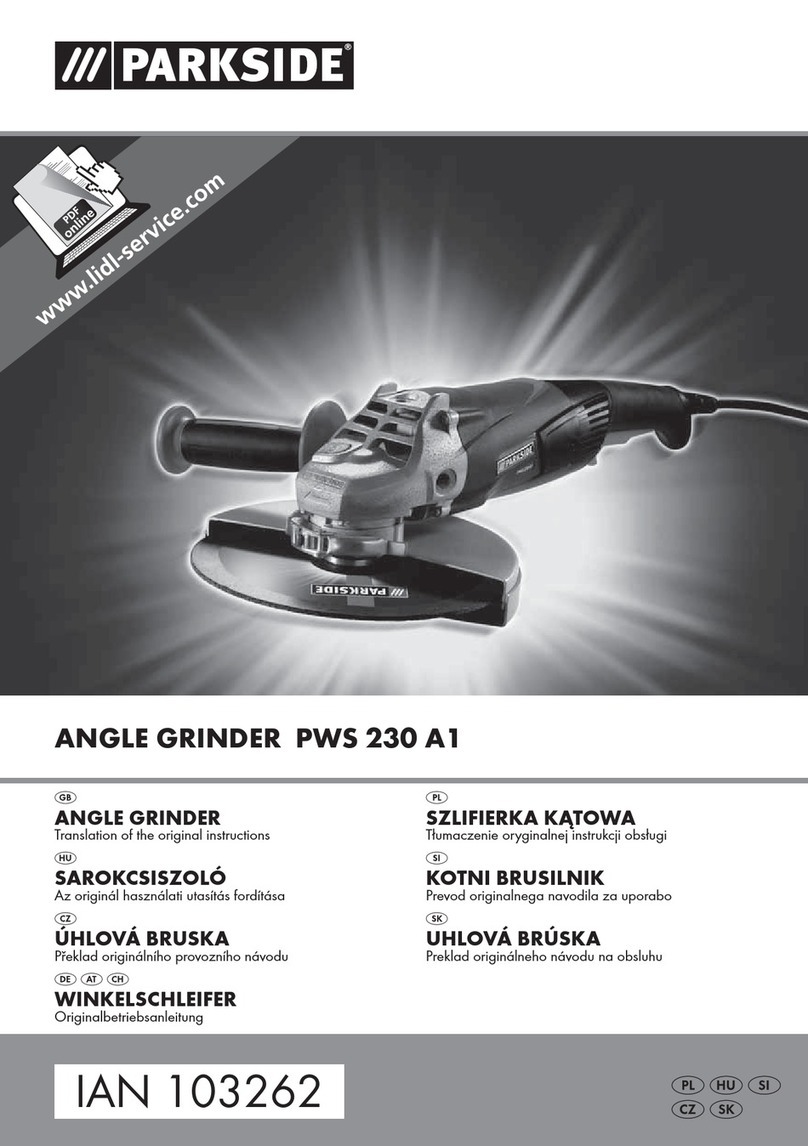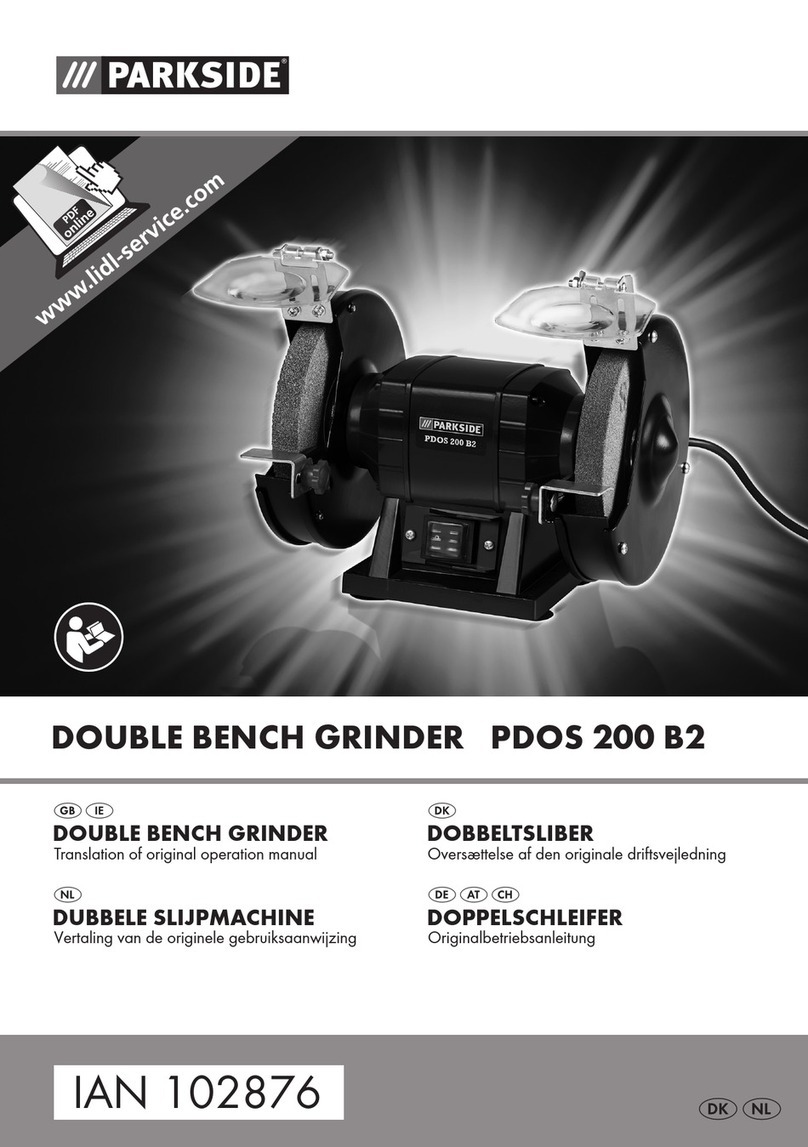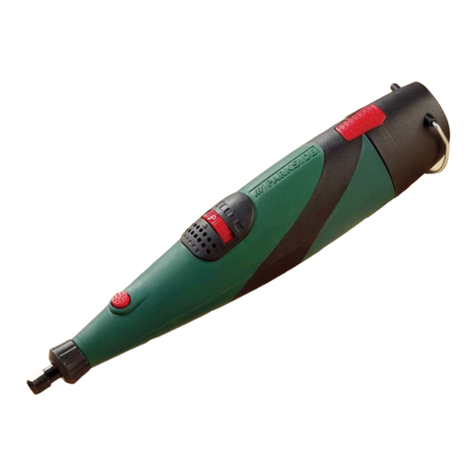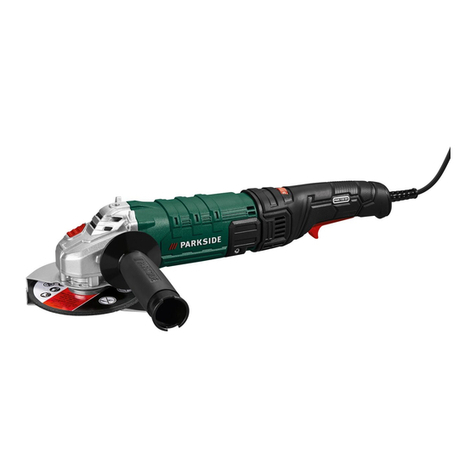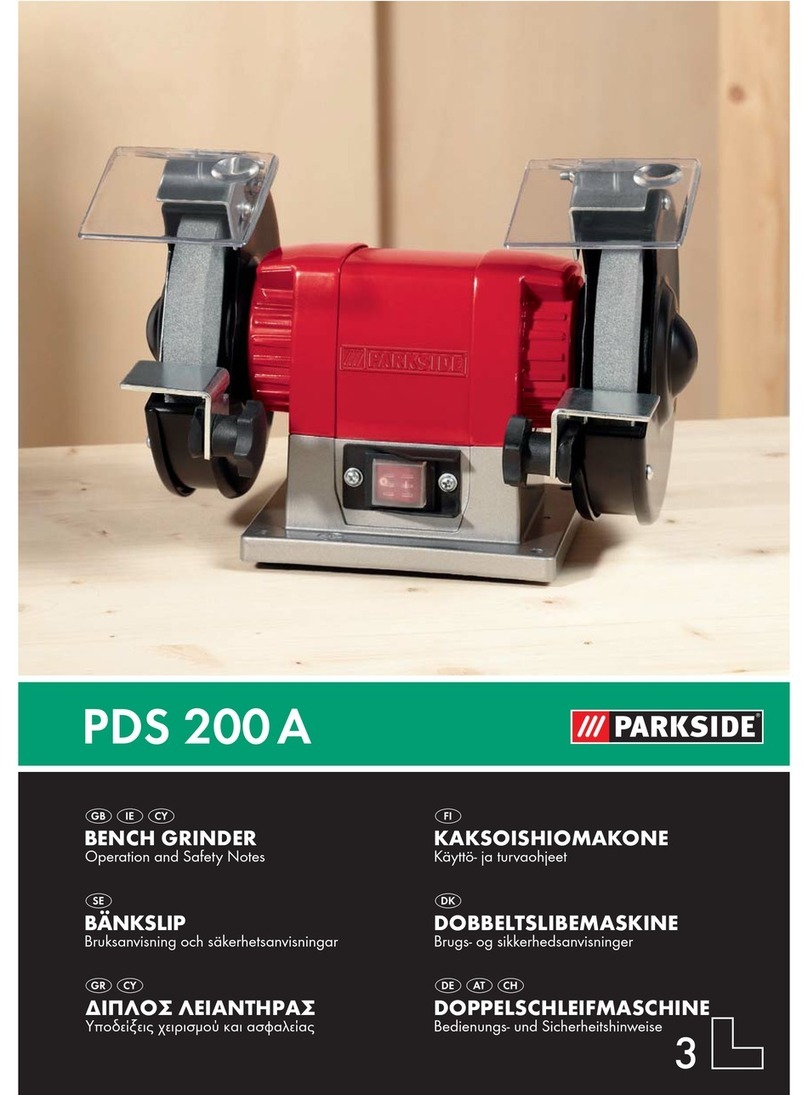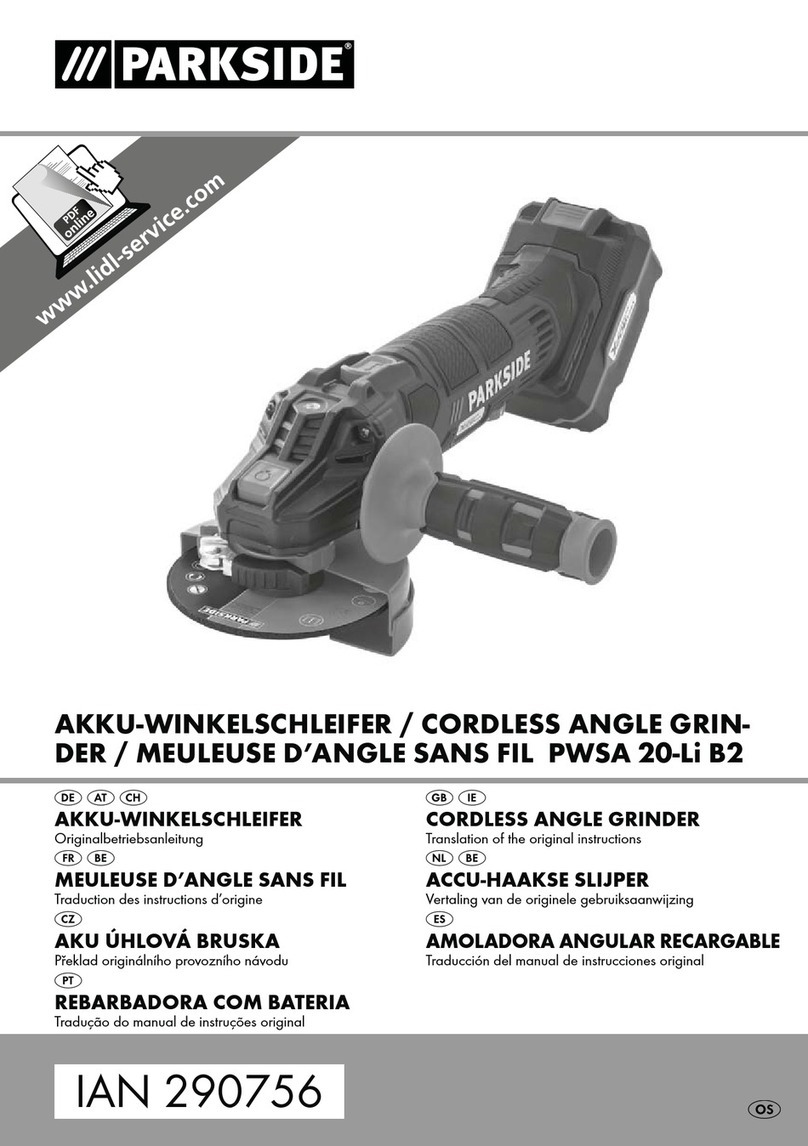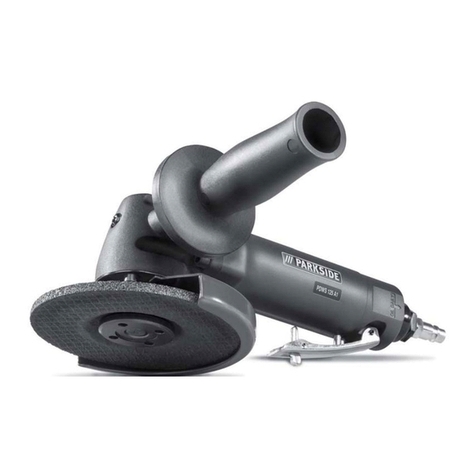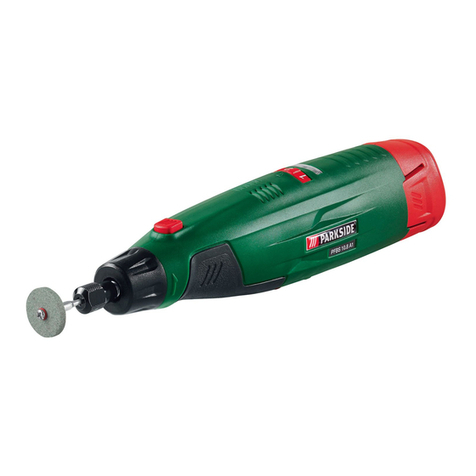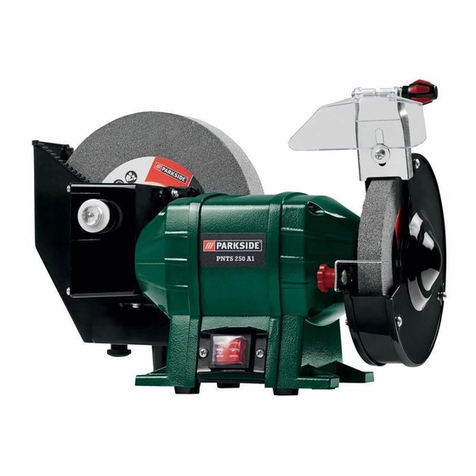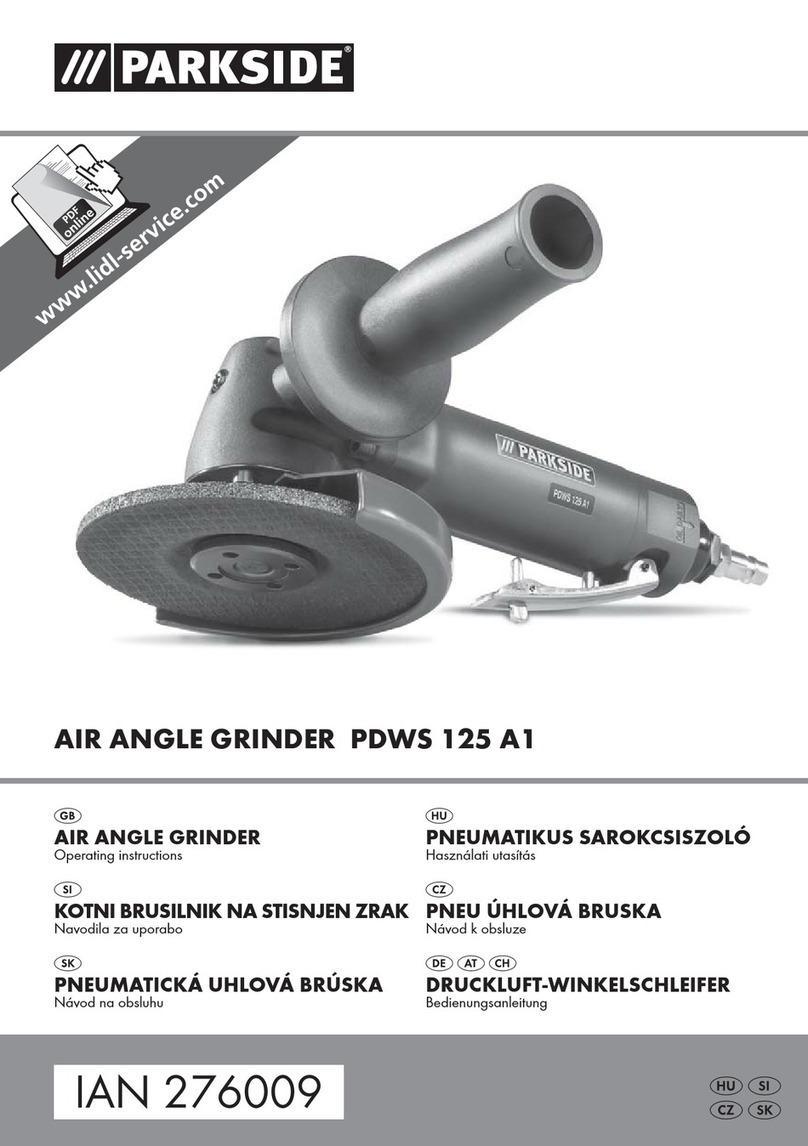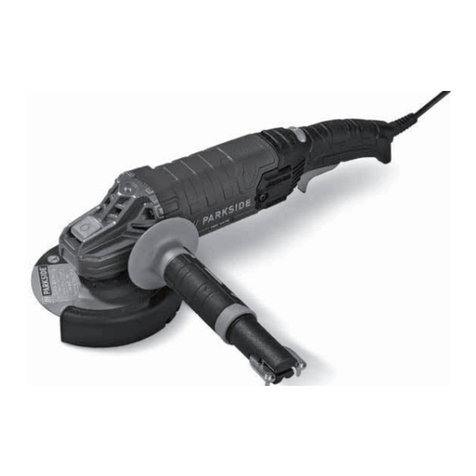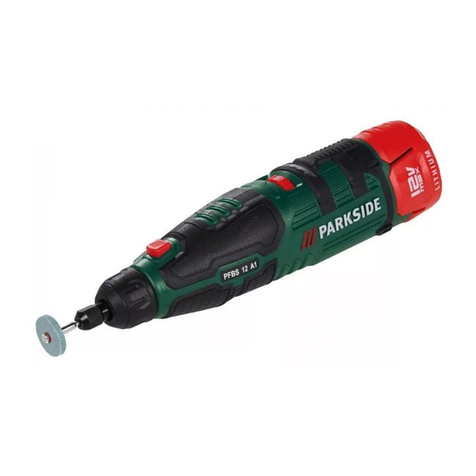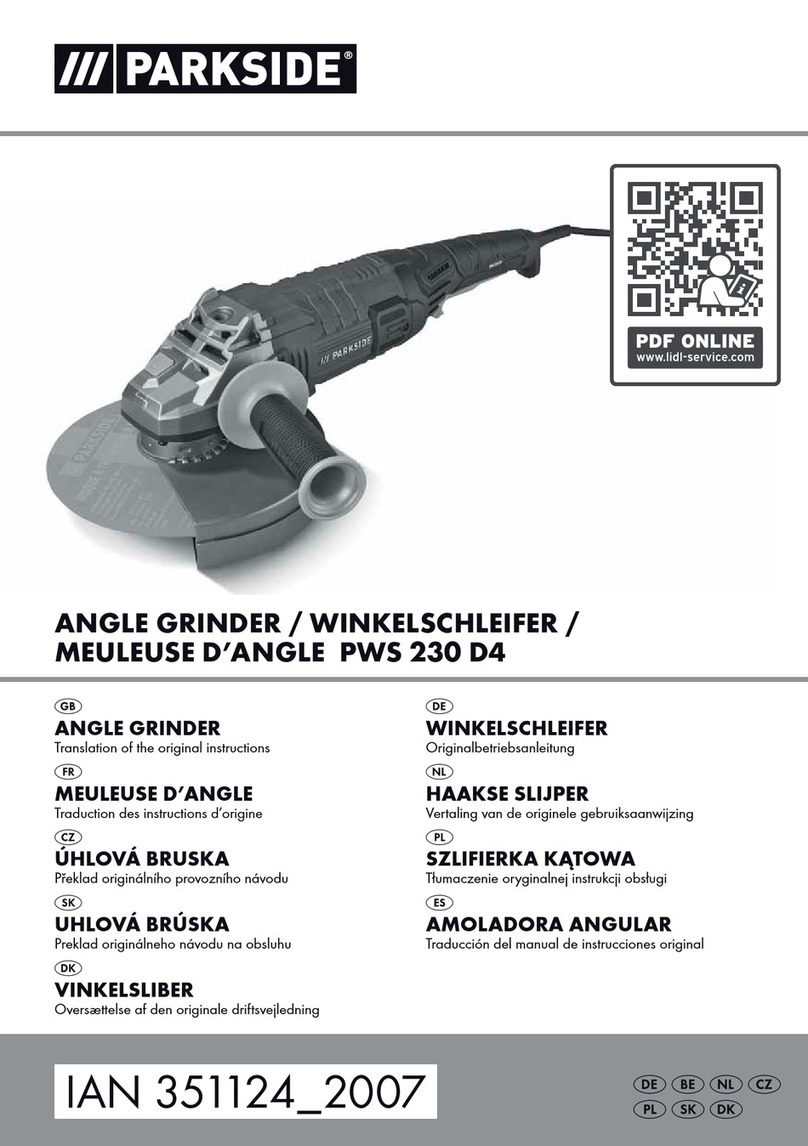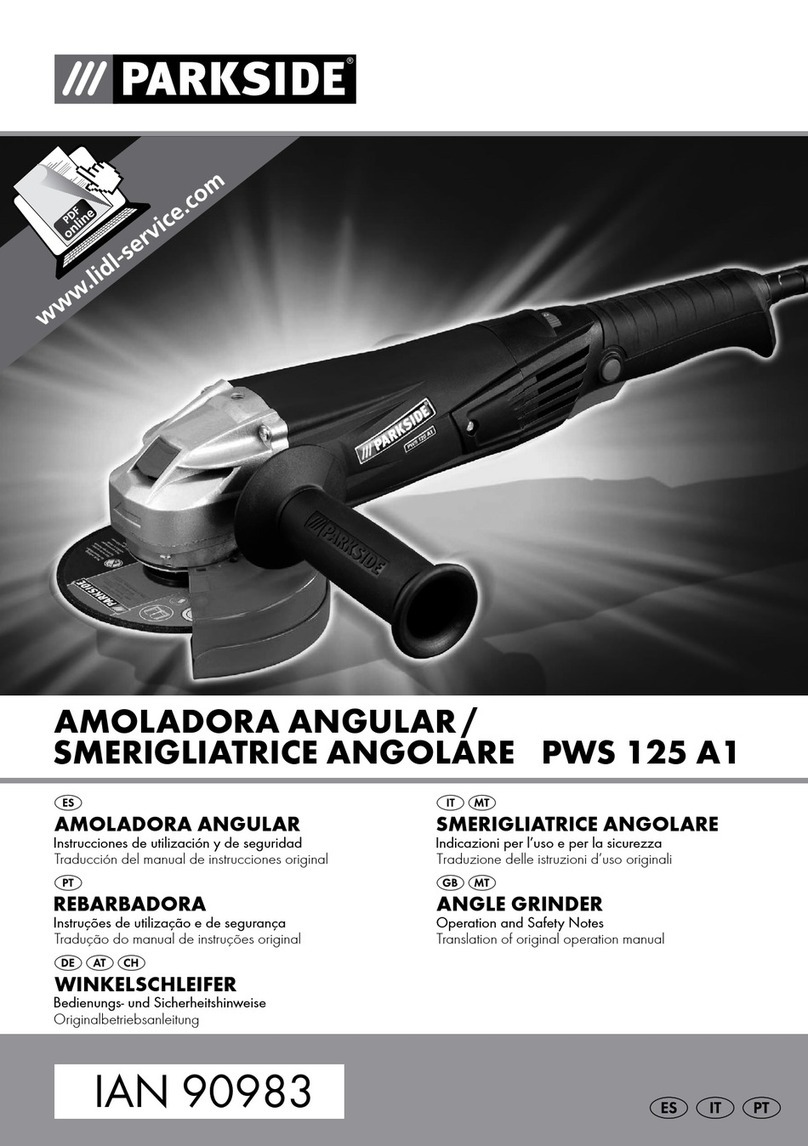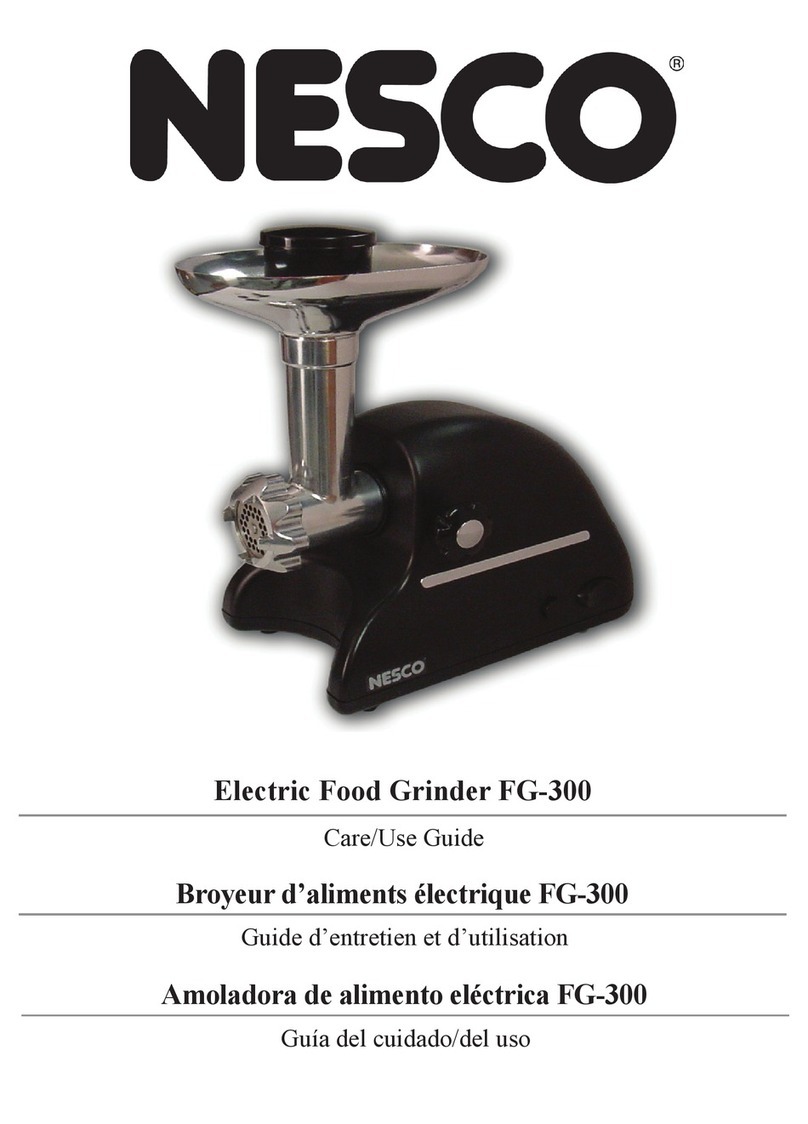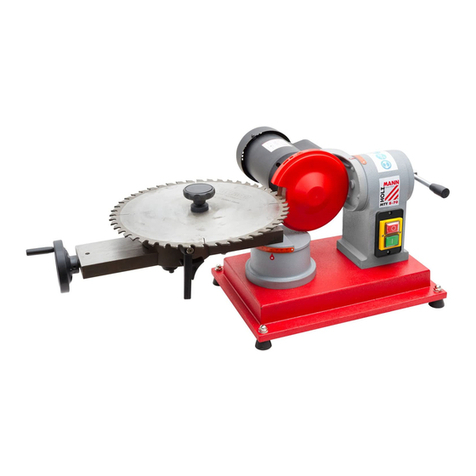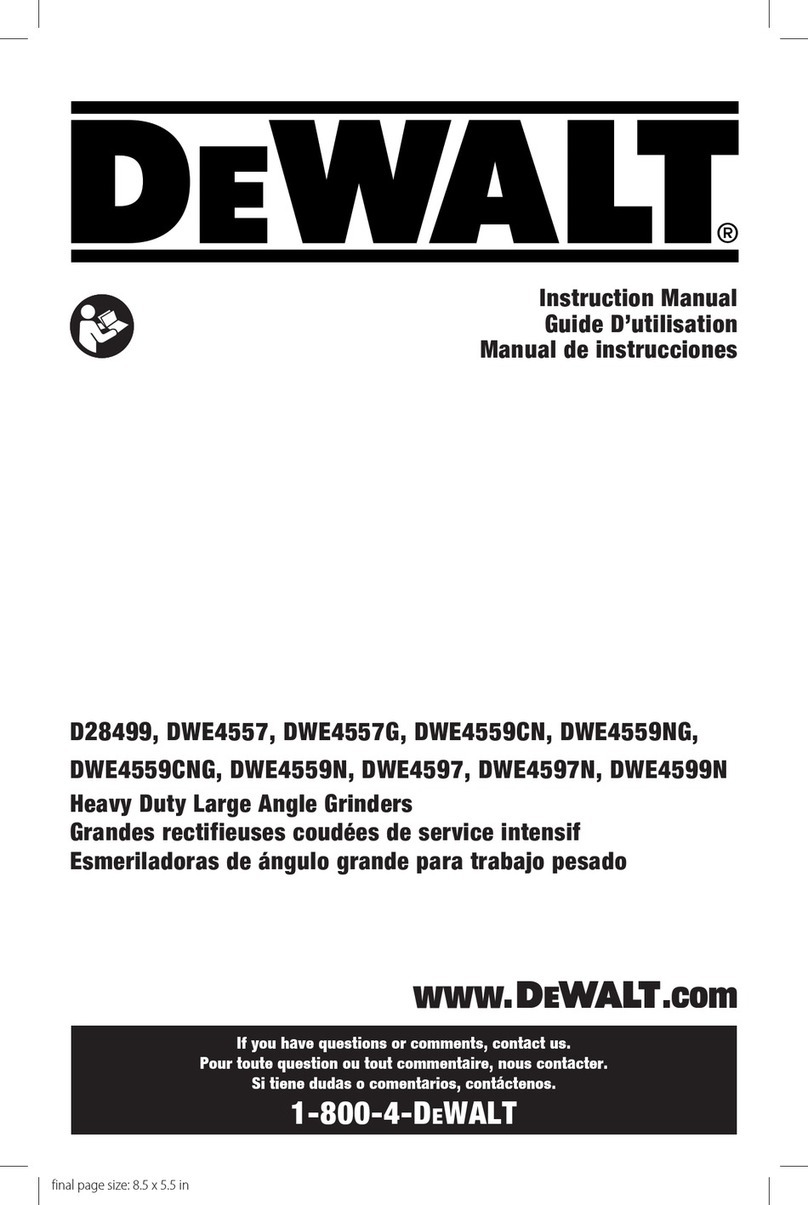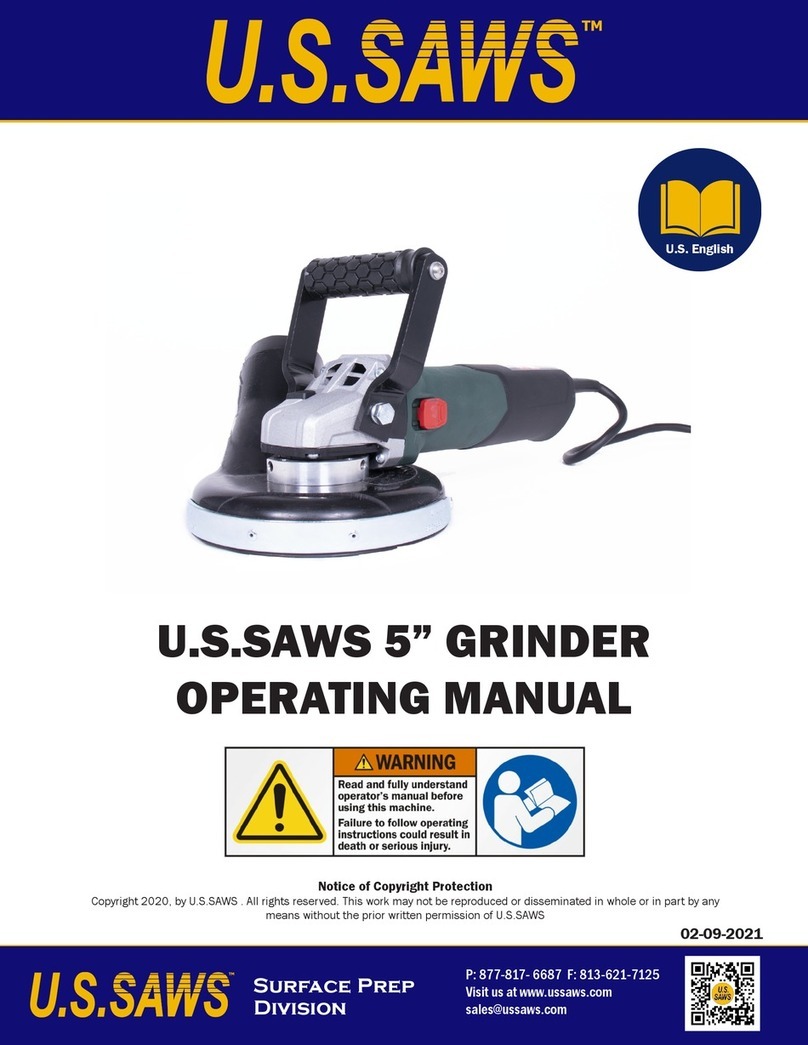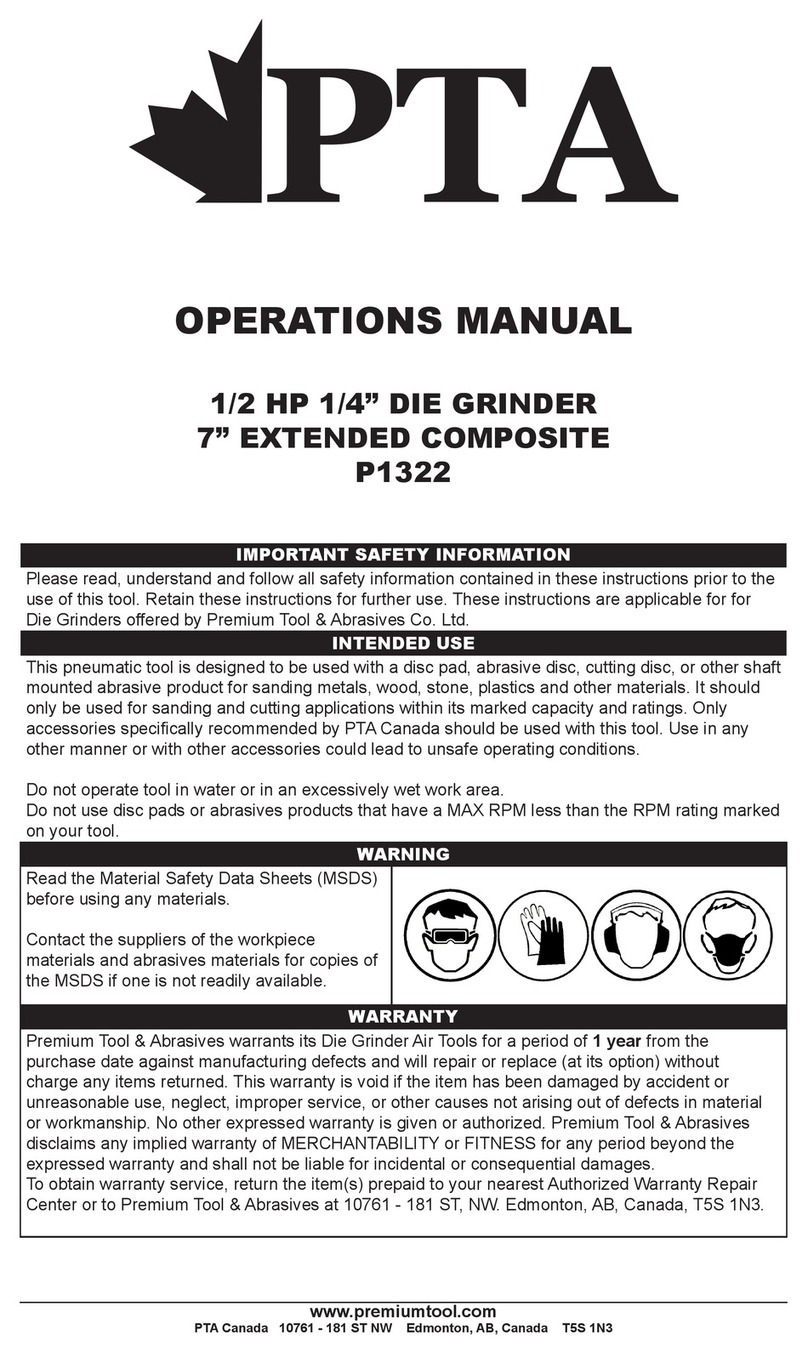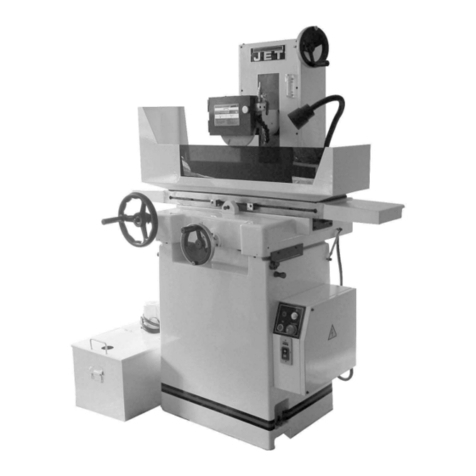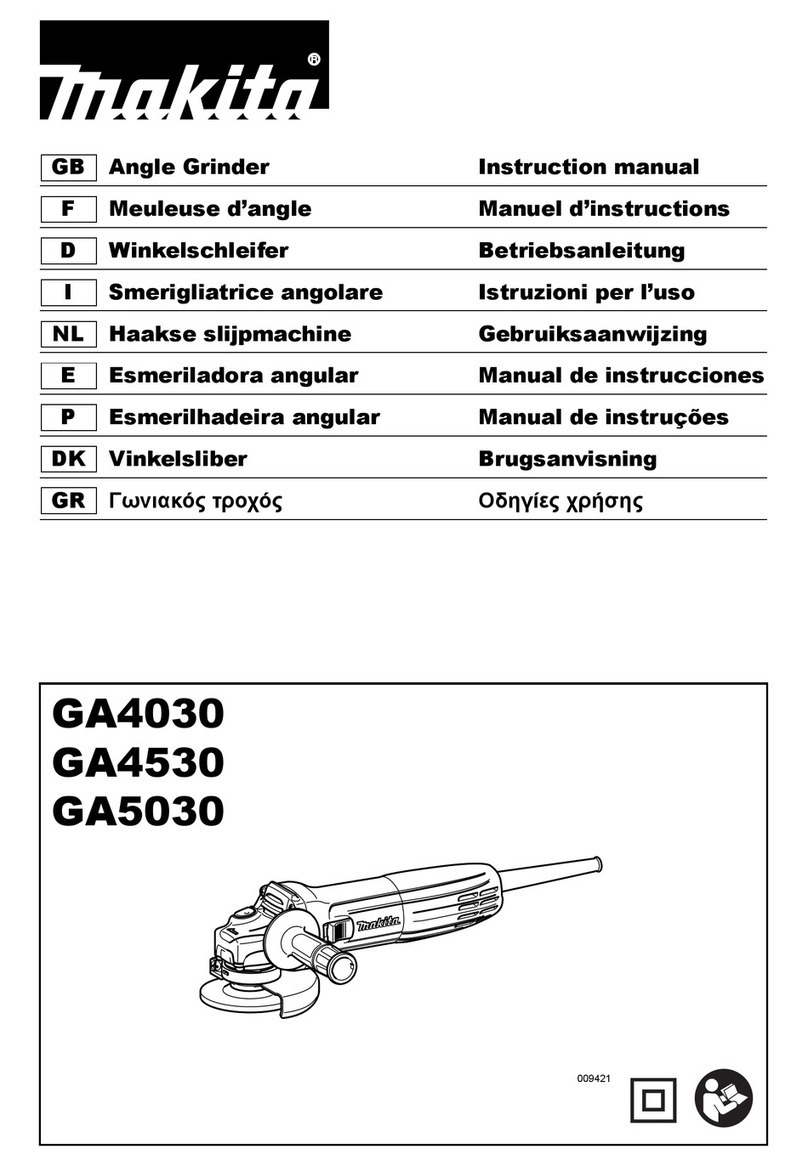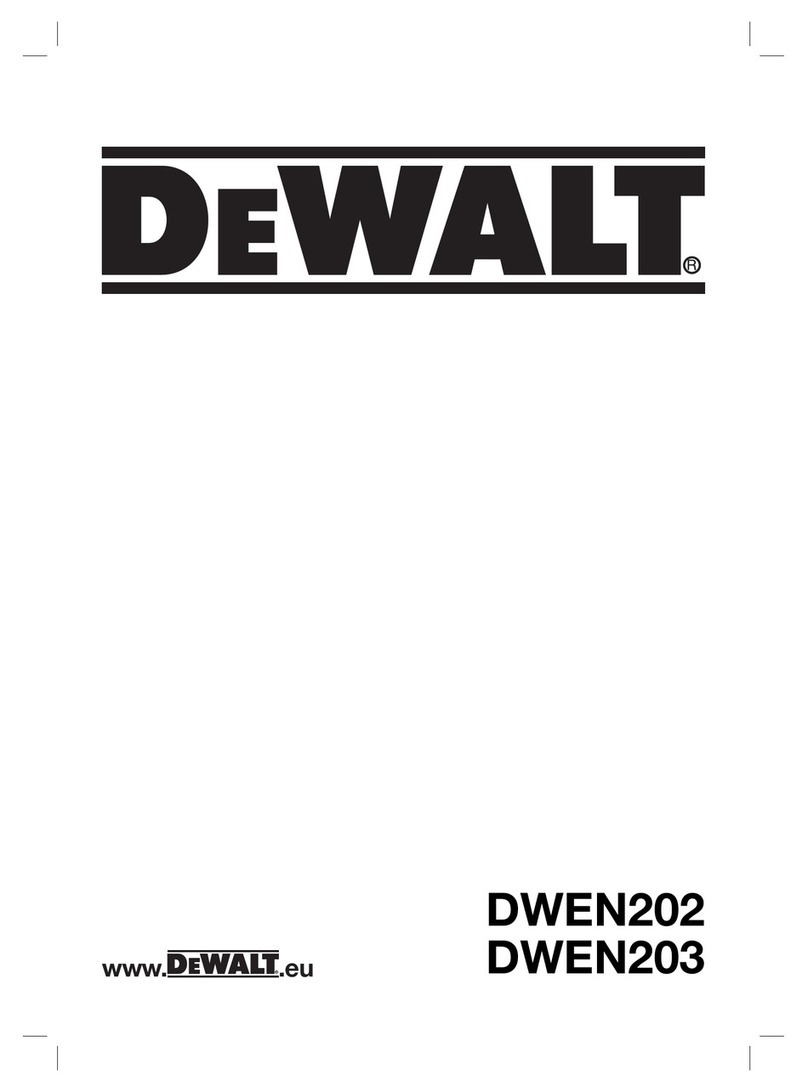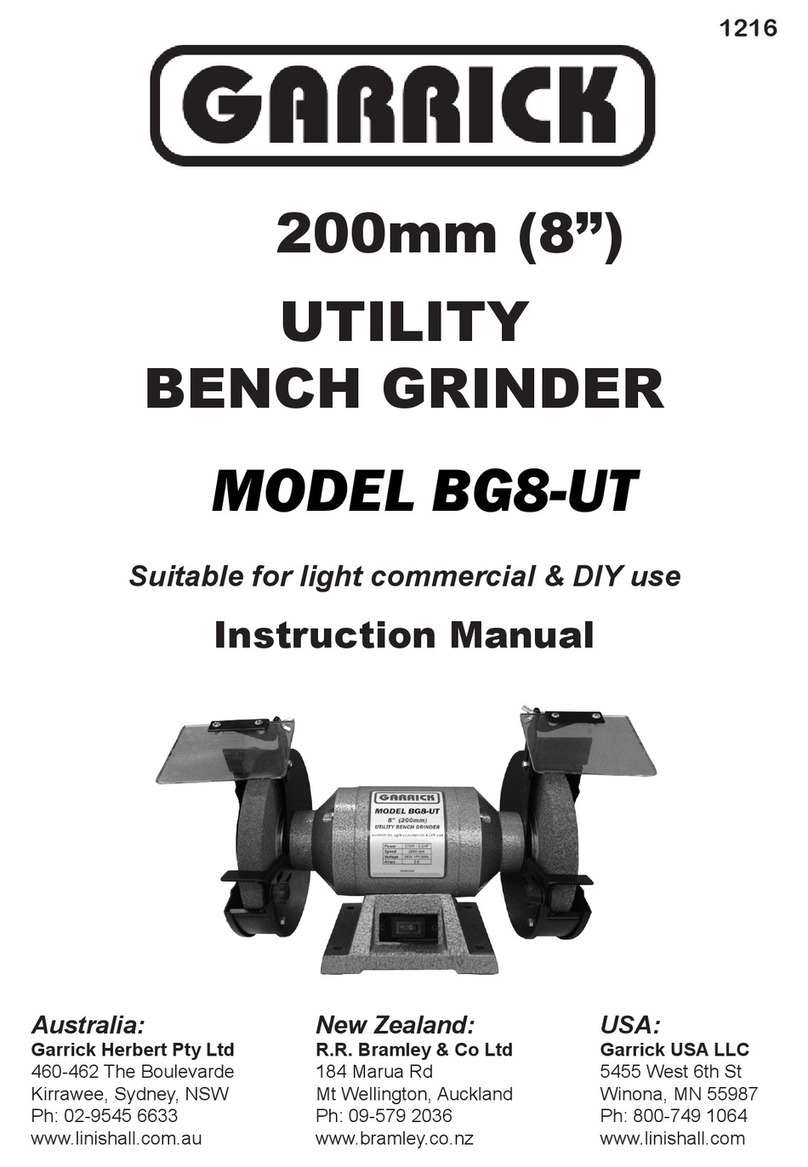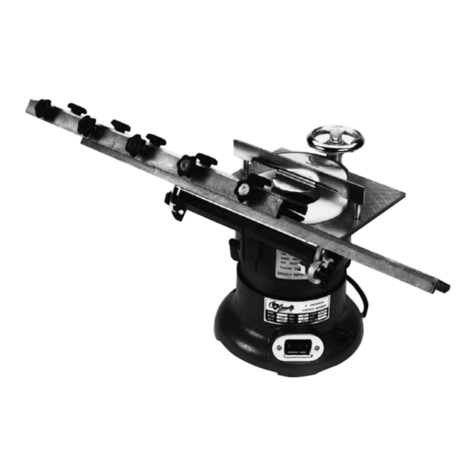
PFBS 12 A1
■ 6 │ GB│CY
If the mandrel is not sufficiently tightened or the
grinding tool protrudes too far, the tool could
come loose and been thrown out at high speed.
g) Never use damaged accessory tools. Before
each use, check accessory tools such as
grinding discs for chips or cracks, sanding
drums for cracks, wearing or excessive wear
and tear and wire brushes for loose or broken
wires. If the power tool or the accessory
tool in use is dropped, check to see if it is
damaged or use an undamaged accessory
tool. When you have checked and inserted
the accessory tool, ensure that you and any
other people in the vicinity remain outside of
the range of the rotating accessory tool and
allow the tool to rotate at maximum speed for
one minute. Damaged accessory tools usually
break during this test period.
h) Wear personal protective equipment.
Depending on the application, ensure that
you use full face protection, eye protection
or goggles. If required, use a dust mask, ear
protectors, protective gloves or special apron
to protect you from grindings and material
particles. Protected your eyes from flying debris
that may be created during certain applications.
Dust or filter masks must be used to filter any
dust created by the application. If you are ex-
posed to loud noise for any length of time, you
may suffer hearing loss.
i) Ensure that other people remain at a safe
distance to your workspace. Anyone who
enters the workspace must wear personal
protective equipment. Fragments of the work-
piece or broken accessory tools can fly off
and cause injury – even outside the immediate
working area.
j) Hold the power tool only by the insulated
gripping surfaces when performing an oper-
ation where the accessory tool may contact
hidden wiring or its own cord. Contact with
a live cable can also make metal parts of the
appliance live and could result in an electric
shock.
k) Always hold the power tool firmly. When
running up to full speed, the torque of the
motor can cause the power tool to twist.
l) If possible, use clamps to hold the workpiece
in position. Never hold a small workpiece
in one hand and the power tool in the other
while you are using it. By clamping small work-
pieces, you keep both hands free for better
control of the power tool. When cutting round
workpieces such as dowels, rods or pipes, be
aware that these can roll away and this can
cause the tool to jam and be thrown towards
you.
m) Hold the power cord away from any rotating
accessories. If you lose control of the appli-
ance, the cord may get cut or caught and your
hand or arm could get caught in the rotating
accessory tool.
n) Never put the power tool down until the
accessory tool has come to a complete stand-
still. The rotating accessory tool can come into
contact with the surface and cause you to lose
control of the power tool.
o) When changing accessory tools or changing
settings, tighten the collet nut, the chuck or
other fixing elements tightly. Loose fixing ele-
ments can shift unexpectedly and lead to loss of
control; unfixed, rotating components will fly off
violently.
p) Do not leave the power tool running whilst
carrying it. Accidental contact between your
clothing and the rotating accessory tool could
lead to physical injury.
q) Clean the ventilation slits of your power tool
regularly. The engine fan draws dust into the
housing and a strong accumulation of metal
dust can cause electrical hazards.
r) Do not use the power tool in the vicinity of
flammable materials. Sparks can ignite such
materials.
s) Do not use any accessory tools which require
liquid coolant. The use of water or other liquid
coolants may lead to electric shock.
